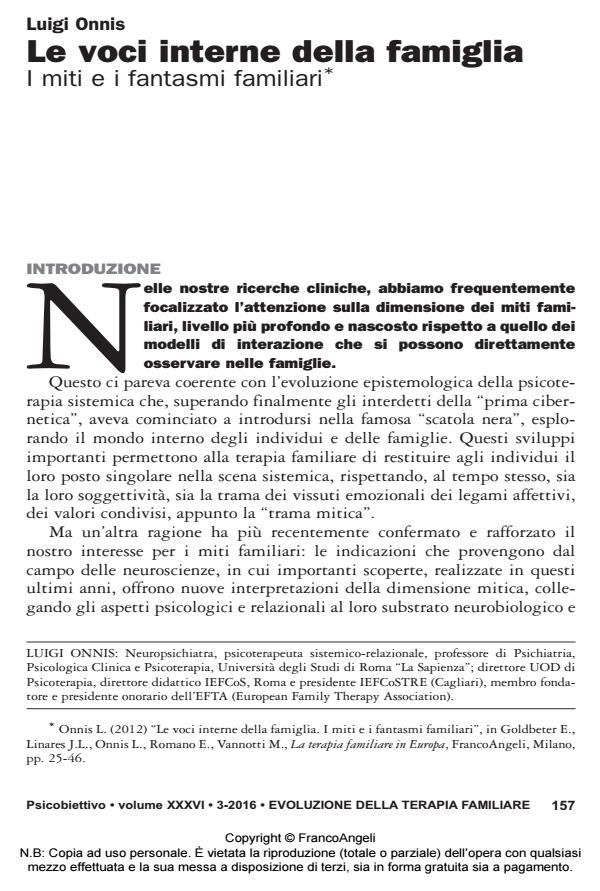Internal family voices. Family myths and ghosts
Journal title PSICOBIETTIVO
Author/s Luigi Onnis
Publishing Year 2016 Issue 2016/3
Language Italian Pages 24 P. 157-180 File size 137 KB
DOI 10.3280/PSOB2016-003010
DOI is like a bar code for intellectual property: to have more infomation
click here
Below, you can see the article first page
If you want to buy this article in PDF format, you can do it, following the instructions to buy download credits

FrancoAngeli is member of Publishers International Linking Association, Inc (PILA), a not-for-profit association which run the CrossRef service enabling links to and from online scholarly content.
This work, in line with the evolution of the epistemological systemic psychotherapy focuses the attention on the dimension of family myths, the deepest and hidden level more than the one of the interaction models which can be directly observed in families. This legendary level collects access of family therapy, following the first cybernetic, at the deepest level of the individual’s inner world and their families, the so-called "black box". In addition, the same legendary level is found to be current thanks to the multiple interconnections with the field of neuroscience, linking psychological and relational aspects with the neurobiological substrate. Finally, it is highlighted the usefulness of the analogue language in psychotherapy through the technique of "Sculptures of Family Time".
Keywords: Family Myths; Implicit Relational Knowing; Analog Storytelling; Mirror Neurons; Sculptures of Family Time
Luigi Onnis, Le voci interne della famiglia I miti e i fantasmi familiari in "PSICOBIETTIVO" 3/2016, pp 157-180, DOI: 10.3280/PSOB2016-003010